
As far I am concerned, working as a professional bird guide is the best job in the world. There are two main reasons for this. Firstly, I see a lot of wildlife and am showing people fantastic birds and wildlife and sharing incredible nature experiences with them along the way. And a nice side benefit is that the job provides the tantalising opportunity to add new and exotic species to your own personal life list. The latter, however, is a double-edged sword though, in that the potential to find new species decreases with successive visits to a destination. Happily, even though you may have seen a species a hundred times, nature will never fail to surprise you. You see, as a guide, you spend a disproportionate amount of time in the field, which means that every now and then something will happen that leaves you utterly speechless. All guides can tell you these kinds of tales around a campfire but, for now, I would like to share one of my experiences from my recent Winter Highlights trip to Bhutan.
Rockjumper has been travelling to Bhutan since 2004 and we have now run in excess 30 tours to this incredible country. It’s a popular trip because of the beauty of the country and its birds, but also because our tour offers exceptional value. And among the 406 bird species we have recorded there, few have the indescribable allure as the Himalayan Monal – surely one of the most beautiful and sought-after species on the planet. Though you can also find this species in China, India and Nepal – Bhutan is far and away the easiest country in which to see this ornate pheasant and it has yet to be missed on one of our tours. Its splendour is such that it is virtually always represented on the list of top ten species recorded and, more often than not, it’s at the very top of said list. However, in January of this year, my tour group and I were treated to a spectacle very few naturalists have ever seen – the Himalayan Monal mating display.
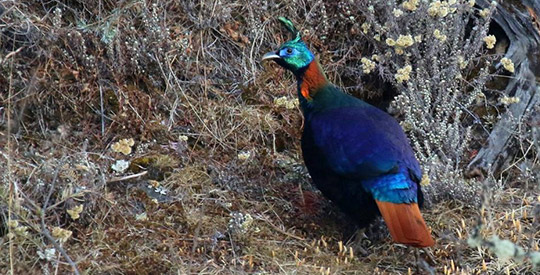
Spring is the traditional time to visit Bhutan, when the days are longer and the risk of snowfall is greatly lessened. But, we do offer specialised tours during winter centred around the ultra-difficult Black-necked Crane among other seasonal species. We venture into rarely visited corners of Bhutan, not typically visited in the spring months and seldom visited by ‘westerners’, where we enjoy breath-taking Himalayan scenery in some of the most pristine and seemingly endless snow-dusted forests anywhere in the world. This gives added chances at finding Wallcreeper, Ibisbill, Snow Pigeon, and the rare Solitary Snipe though we still stand an excellent chance at finding all of Bhutan’s other avian gems including the scarce Ward’s Trogon, Fire-tailed Myzornis, Satyr Tragopan, Fire-tailed Sunbird, Rufous-necked Hornbill and, of course, the Himalayan Monal.
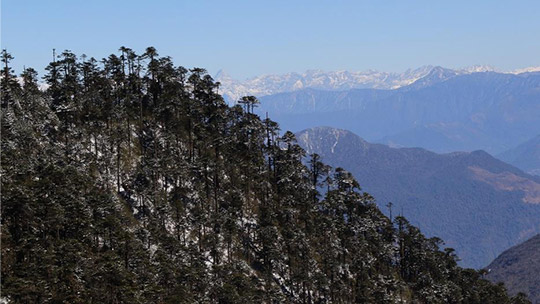
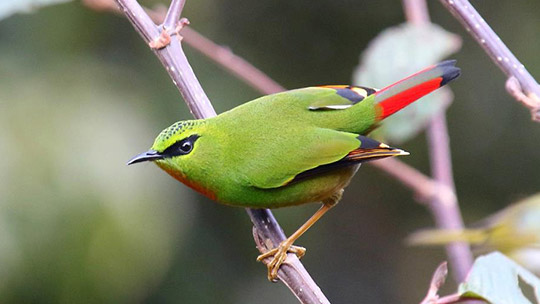
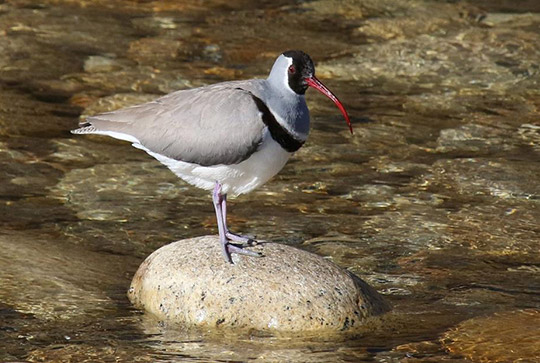
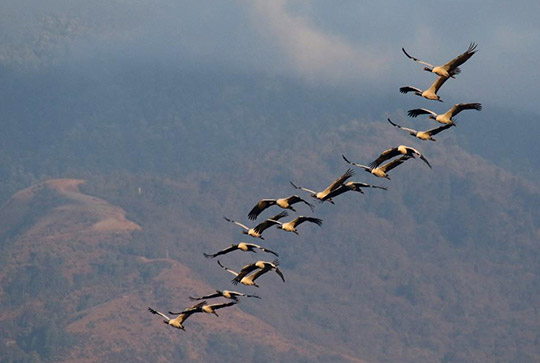
Near the end of our tour, we found ourselves in the extreme east of Bhutan. It was still dark and incredibly cold as we departed our hotel in Paro. Our bus chugged slowly up the Chele La pass, situated just outside of the town itself and the traditional site for the Himalayan Monal. As we climbed in altitude, the landscape became progressively more frozen. We anxiously debated whether we would be able to reach the top, following the heaviest recorded snowfall in the Himalayas ever, but the road was passable. As we reached the alpine habitats favoured by the Monals, at roughly 3000m (9800ft) above sea level, dawn broke and we began our search. The easiest approach to see pheasants is to cruise the roads slowly, scanning every open meadow carefully or watching as they scurry away from the road edge. It did not take long before we sighted our first Monal – a female – but we continued in our efforts to find a male. Around one of the next bends we glimpsed another female as she darted into the thick brush, but then a male crossed the road, and soon after a covey of roughly 8 birds were sighted on an open glade. Even in the early morning mist, the iridescent plumage of the two males in attendance seemed to glisten as if illuminated by golden rays of sunlight. As we watched the birds feeding, none of us could have predicted what happened next.
At first our two males began calling to each other – a high-pitched echoing whistle – but soon they engaged in an extended cockfight which lasted ten or fifteen minutes; each male repeatedly leaped several feet in the air, kicking at the other with the sharp spurs on its legs. We marvelled at the sheer strength of the birds, commenting that they were bound to seriously injure each other. Eventually, the battle eventually ended when the ‘lesser’ of the two males retreated leaving the victor with his harem of females.
Initially, the females paid little attention to the tomfoolery happening nearby…boys will be boys, we suggested. However, the remaining male became fixated on the females following their every move like a testosterone-driven teenager. We continued watching when, suddenly, the male raised his tail and bowed to reveal every shade of iridescence in his plumage.
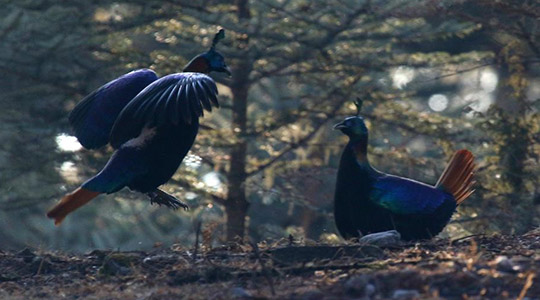
The females turned their attention to the male as he drooped his wings, revealing his glistening white back, and fanned his shimmering orange tail. The display culminated with the male fanning his splayed tail back-and-forth – to which the females appeared to become totally hypnotised. No mating took place, perhaps since it was still early in the season, but breathless we watched afraid that even the smallest movement would disturb the birds and feeling totally unable to comprehend what was unfolding before us.


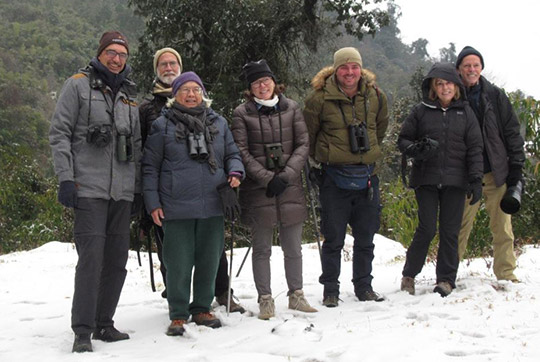
Many of the pheasants have incredible displays; the peacocks, the Great Argus, the firebacks, the tragopans, the so-called ‘ruffed’ pheasants and, yes, even the monals. These range from subtle to dramatic plumage transformations, typically involving some hidden ornamental plumes and a movement of sorts, with males rivalling the antics of Birds-of-Paradise in their efforts to seduce females. However, most pheasants are extremely reclusive so, aside for the observations of captive birds, little is known about the reproductive behaviour of most species. This behaviour of the Himalayan Monal is so rare that even our local guides, who have each seen the species hundreds of times previously, had never seen it themselves.
To celebrate our success on this, our final morning of the tour, we returned to Paro absolutely ecstatic. There we shared a delicious lunch and final toast to our male Himalayan Monal!
